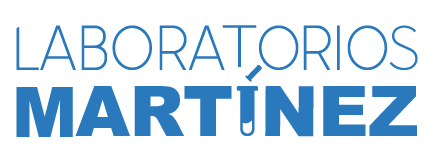Straight-line depreciation assumes that the asset declines by the same amount every year. That makes it simple to calculate, but not always the most accurate way to depreciate an asset. Switching to real estate, imagine you buy a rental property for $150,000.
- For tax preparation purposes, you need to know exactly what you can and can’t deduct for depreciation.
- If your company uses a piece of equipment, you should see more depreciation when you use the machinery to produce more units of a commodity.
- The double-declining balance method is a form of accelerated depreciation.
- Depreciation recapture involves paying taxes on gains you had previously deducted for in the form of depreciation.
- The salvage value, also known as residual value or scrap value, is the estimated value of the asset at the end of its useful life.
Tax Savings
Aaron Osinski is a versatile writer with a passion for crafting engaging content across various topics. With this method, organizations can easily assess the consumption of the asset over the years. With straight-line depreciation, you must assign a “salvage value” to the asset you are depreciating. The salvage value is how much straight-line depreciation can be calculated by taking: you expect an asset to be worth after its “useful life”. It prevents bias in situations when the pattern of economic benefits from an asset is hard to estimate.
Straight Line Depreciation Calculator
The straight line depreciation method is used to calculate the annual depreciation expense of a fixed asset. This gives you the depreciable amount, which you divide by the asset’s useful life. This calculation yields the annual depreciation expense, which remains constant each year. Adherence to accounting standards like GAAP or IFRS is essential for consistency and comparability in financial reporting. These standards allow stakeholders to assess a company’s financial health effectively. However, tax regulations, such as the IRC, may require different methods for depreciation reporting.
This method typically doesn’t apply to real estate investors, with the possible exception of depreciating a work-related vehicle based on mileage driven. Talk to your accountant before deciding how to depreciate your work vehicle. Finally, inherited properties raise a whole new question of cost basis. If you inherit a rental property, typically you’ll use the fair market value of the property at the time of your benefactor’s death as the cost basis for depreciation. You owe taxes on $140,000 of gains, but that $140,000 is not all taxed the same.
- This calculation results in a fixed depreciation expense that remains constant throughout the asset’s useful life, making it a preferred choice for businesses due to its simplicity.
- For example, if the cost is Rs 1,20,000, scrap value is Rs 72,000, and the rate is 10% p.a., depreciation is Rs 12,000.
- You owe taxes on $140,000 of gains, but that $140,000 is not all taxed the same.
- It works best for assets that have a predictable usage pattern and a clear, fixed lifespan.
- Straight line method is also convenient to use where no reliable estimate can be made regarding the pattern of economic benefits expected to be derived over an asset’s useful life.
Oil & Gas Asset Management Tool
Regularly reviewing asset data is also crucial, as changes in useful life, salvage value, or other relevant factors can impact depreciation calculations. The straight-line depreciation method has its share of advantages that make it a popular choice among businesses. Its simplicity is one of its main benefits, making it easy to understand and calculate. The main advantages of straight-line depreciation include its simplicity, predictability, and equal expense distribution.
Therefore, they must be depreciated over a longer period, commonly 15 years. Property updates such as a new roof fall under the category of capital improvements. Depreciation recapture involves paying taxes on gains you had previously deducted for in the form of depreciation.
This calculation results in a uniform depreciation amount that is expensed each period during the asset’s useful life. Instead of dividing by the number of years in the depreciation calculation, the term (1 / Useful life) used in the formula above, can be converted to a depreciation rate. The amount of the asset depreciated over its useful life is referred to as the depreciable cost and is equal to the cost less the salvage value of the asset. Yes, financial solutions like Intuit Enterprise Suite can automate depreciation calculations, saving you time and reducing the risk of errors.
This method is used with assets that quickly lose value early in their useful life. A company may also choose to go with this method if it offers them tax or cash flow advantages. Recording depreciation accurately ensures financial statements reflect the asset’s gradual value reduction.
Can straight line depreciation be used for tax purposes on real estate properties?
A company may elect to use one depreciation method over another in order to gain tax or cash flow advantages. While land does not depreciate, residential property, such as rental homes, does. But the IRS requires investors to use a different depreciation method known as the modified accelerated cost recovery system (MACRS, for short). Straight-Line depreciation is the depreciation method that calculated by divided the assets’ cost by the useful life.
This method is useful for businesses that have significant year-to-year fluctuations in production. The method can help you predict your expenses and determine when it’s time for a new investment and prepare for tax season. Learn how to calculate straight-line depreciation, when to use it, and what it looks like in the real world.
Other depreciation methods to consider
What the IRS lists as the usable lifespan for your business equipment may not be an accurate reflection of reality in your business. And in real estate, your buildings almost certainly won’t be worthless after 27.5 years. Depreciation expense will be charged to the income statement and it will deduct the profit as a normal expense. Accumulated depreciation will show as the contra account of the fixed asset and it deducts the fixed asset cost. Straight line depreciation is a method used to allocate the cost of a capital asset over its useful life. It is the simplest and most commonly employed depreciation technique for distributing the expense of an asset uniformly across its expected lifespan.
This method is widely used because it is straightforward, and it helps organizations accurately reflect the value of their assets on financial statements. Understanding the financial health of a business involves a lot of accounting. One of the most popular methods for determining the value of a business is straight line depreciation. Investors often choose the straight line method for its simplicity and consistency.
This method is commonly used to calculate the carrying amount of a fixed asset. To calculate depreciation using the Straight Line Method, you need to determine the asset’s initial cost, estimated useful life, and salvage value. The depreciable base is then calculated by subtracting the salvage value from the asset cost. It represents the depreciation expense evenly over the estimated full life of a fixed asset. You can use a basic straight-line depreciation formula to calculate this, too.
It affects both the balance sheet and the income statement by decreasing the book value of the asset and recording depreciation expense, respectively. This method helps maintain a consistent and accurate representation of a company’s assets and expenses over time. On the balance sheet, depreciation affects both the assets and the accumulated depreciation accounts. When a company purchases a capital asset, it is recorded at its original cost in the fixed assets section.


